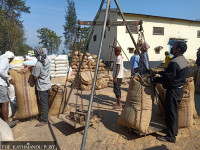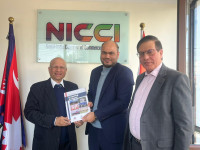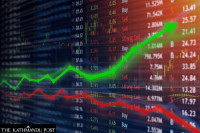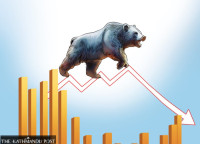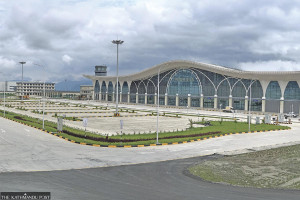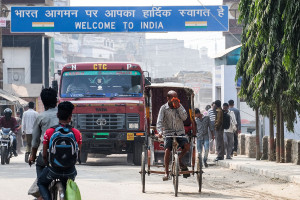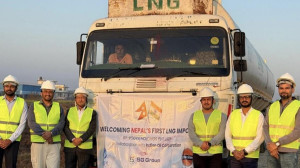Money
Gold fever grips Nepal as economy stalls and fears mount
Despite crises and shrinking incomes, bullion demand soars as investors seek a safe haven amid rumours of demonetisation and political uncertainty.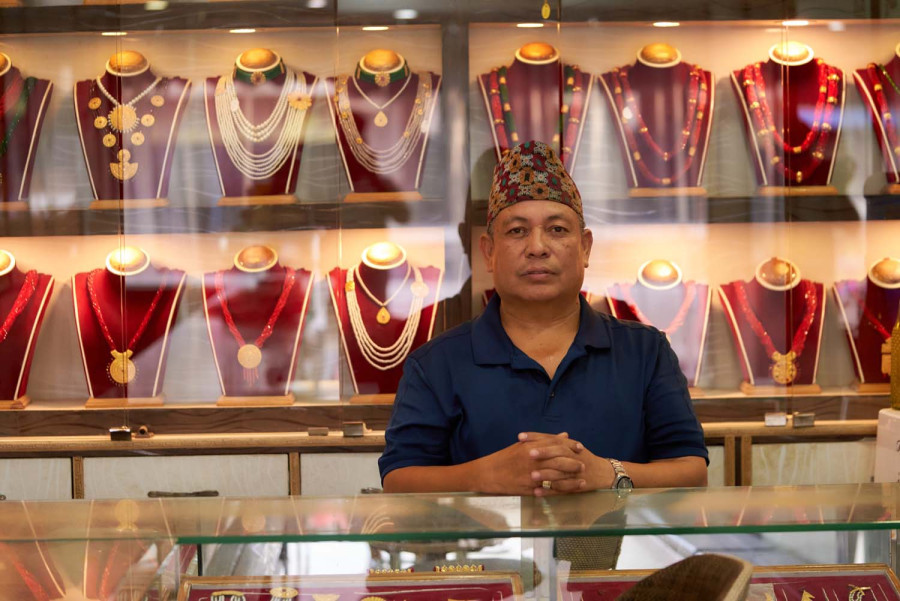
Krishana Prasain
Two back-to-back disasters have brought Nepal’s economy to a near standstill, causing a sharp decline in people’s purchasing power. Yet, even amid this economic gloom, the value of one precious metal continues to increase.
Bullion traders in Kathmandu report that customer flow in gold jewellery shops has surged dramatically, despite the relentless rise in gold prices, which are breaking new records almost daily.
The daily demand for gold has rocketed to around 40 kg—up from 15 kg before the recent protests. This demand has even exceeded the level bullion traders had projected for the upcoming wedding season, when the demand was expected to reach 30 kg a day.
Insiders attribute this surge to two factors: gold’s status as a safe-haven asset and the widespread expectation of further price increases.
A safe-haven asset is one that retains or gains value during economic or political turmoil. With the country in a downturn, gold demand traditionally strengthens as investors seek stability.
On Tuesday, the World Bank reported that September’s bloody protest was expected to drag the country’s economic growth down to 2.1 percent for the current fiscal year, with a possible negative growth ranging between 1.5 and 2.6 percent.
Back in April, the bank had projected Nepal’s economy to expand by an average of 5.4 percent this fiscal year. The new report does not account for the additional losses from the torrential rainfall of October 3–4, which caused extensive damage to lives, infrastructure, and agriculture—losses that may also run into billions.
“The real estate sector and stock market are not doing well. Interest rates on deposits have dropped to among the lowest levels in history. This is why, at this point, more and more Nepalis are investing in gold,” said Nara Bahadur Thapa, former executive director at Nepal Rastra Bank.
But these are not the only driving forces.
“The country’s political uncertainty has deeply affected the business environment. Recent bloodshed also saw businesses being directly targeted. In this condition, the private sector also sees gold as a safe investment,” Thapa added.
Meanwhile, another rumour has been spreading rapidly in the market—demonetisation.
“This has created panic, particularly among those holding illegal or unaccounted money. They may be rushing to buy gold,” said Thapa.
When handfuls of cooperatives—once seen as another “safe haven” to park idle or illicit funds—collapsed, gold emerged as the next viable alternative.
Gold, as an asset, is typically negatively correlated with the broader economy, meaning it tends to appreciate during economic distress.
Arjun Rasaili, president of the Federation of Nepal Gold and Silver Dealers’ Association, said the bullion market has been behaving strangely in recent days.
“We’ve seen a shortage of gold in the market over the past three to four days, as daily demand has shot up to 40 kilos,” said Rasaili. “We are not sure what is driving this surge, but many buyers fear that prices could rise even higher ahead of the wedding season. So they may be buying in advance.”
However, insiders say that even robust wedding-related sales would not normally generate a daily demand of 40 kg when the overall economy is so wobbly.
On Thursday, the association met with officials at the Nepal Bankers’ Association, requesting them to import more gold amid the growing shortage. For now, banks reportedly have no stock of gold.
Nepal’s gold dealers are predicting a further bullish trend, following Thursday’s new record of Rs239,200 per tola in the local bullion market.
On Wednesday, international gold prices surged past $4,000 an ounce for the first time, continuing a record-breaking rally driven by global geopolitical and economic uncertainty and expectations of US interest rate cuts.
According to international media reports, spot gold was up 1.7 percent at $4,050.24 per ounce on Wednesday, while US gold futures for December delivery closed 1.7 percent higher at $4,070.5.
Goldman Sachs, a leading global investment banking firm, on Monday raised its December 2026 gold price forecast to $4,900 per ounce, up from $4,300, citing strong Western exchange-traded fund inflows and continued central bank buying.
“Based on international market trends, we had expected gold prices to cross $4,000 per ounce by mid-2026. But as the price has already exceeded $4,040, we now believe it could reach Rs250,000 or even Rs260,000 per tola very soon,” Rasaili said.
“People are allowed to buy gold jewellery but not bar gold,” he added.
In Nepal, individuals cannot purchase raw or bar gold from the central bank, commercial banks, or bullion traders. The central bank authorises commercial banks to import up to 20 kg of gold per day, while traders are allowed to buy only one kg at a time from banks.
Nepal has no regulations on gold jewellery holdings or taxation, even though the precious metal is deeply woven into the country’s culture and tradition.
India, by contrast, regulates gold holdings. There is no upper limit on possessing physical gold, such as jewellery, coins, or bars. Still, the Income Tax Act sets guidelines for permissible limits based on marital status: a married woman may hold up to 500 grams of gold, an unmarried woman 250 grams, and a man 100 grams.
In Nepal, only registered bullion traders with a Permanent Account Number (PAN) can buy gold from banks. Retailers are allowed to sell only gold jewellery—not bars.
For middle-class families, who typically buy five to six tolas of gold for weddings, the cost has now become staggering. Bullion traders said that making a simple gold chain weighing one tola now costs about Rs269,400, including tax and labour charges.
Families traditionally buy gold during festivals like Teej, Dashain, and Tihar, when employees get bonuses, and when buying gold is considered auspicious.
Over the past year, gold prices have increased by Rs80,100 per tola—from Rs159,100 to Rs239,200. In the past five years, the price has surged by Rs144,400 per tola.
Nepal imported 1,622 kg of gold worth Rs19.94 billion in the last fiscal year, mostly from the United Arab Emirates and Turkey, with smaller quantities coming from Qatar.




 7.12°C Kathmandu
7.12°C Kathmandu
